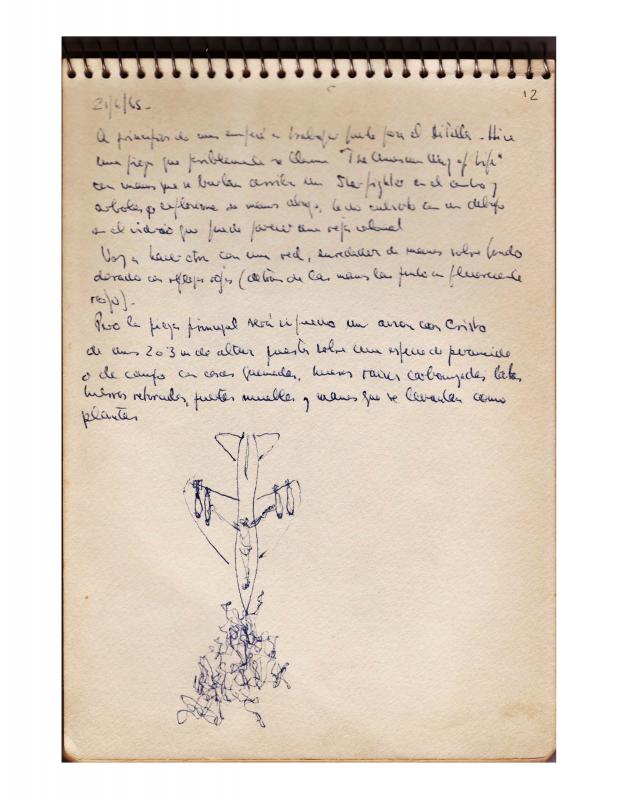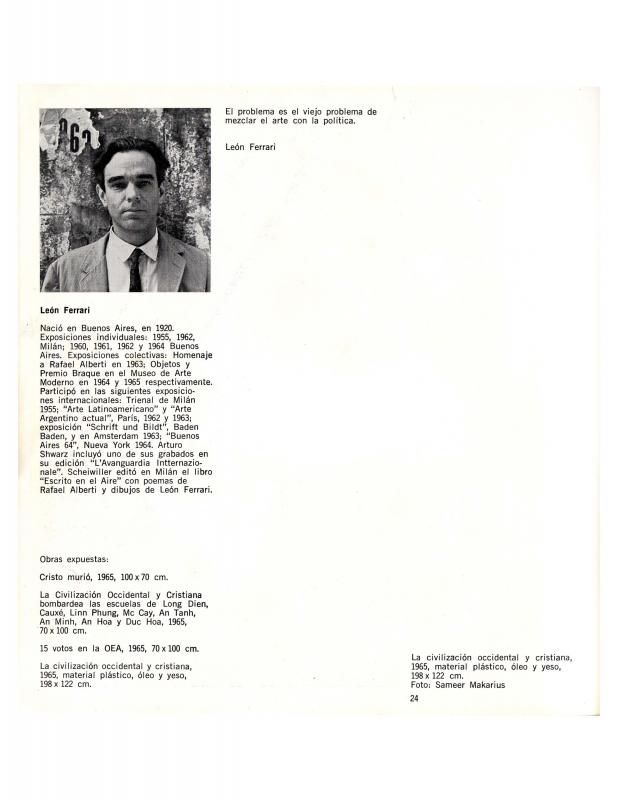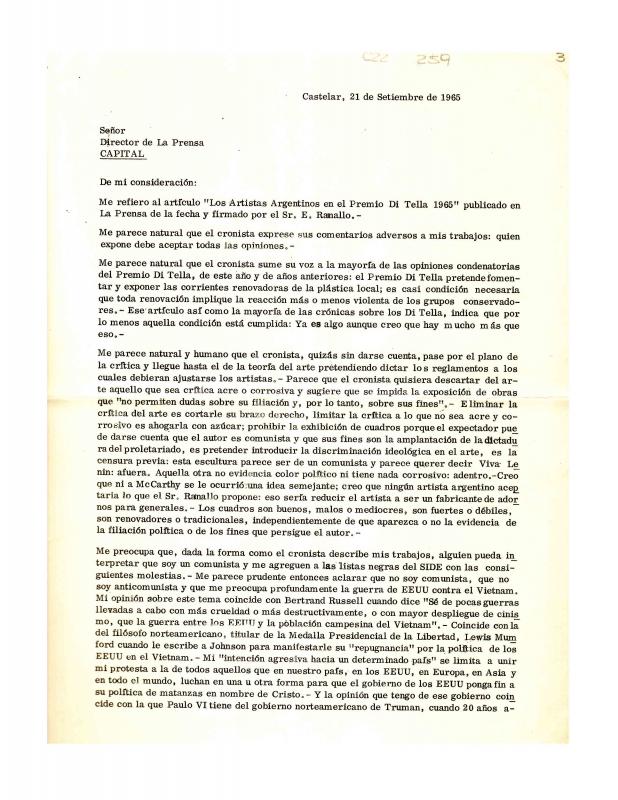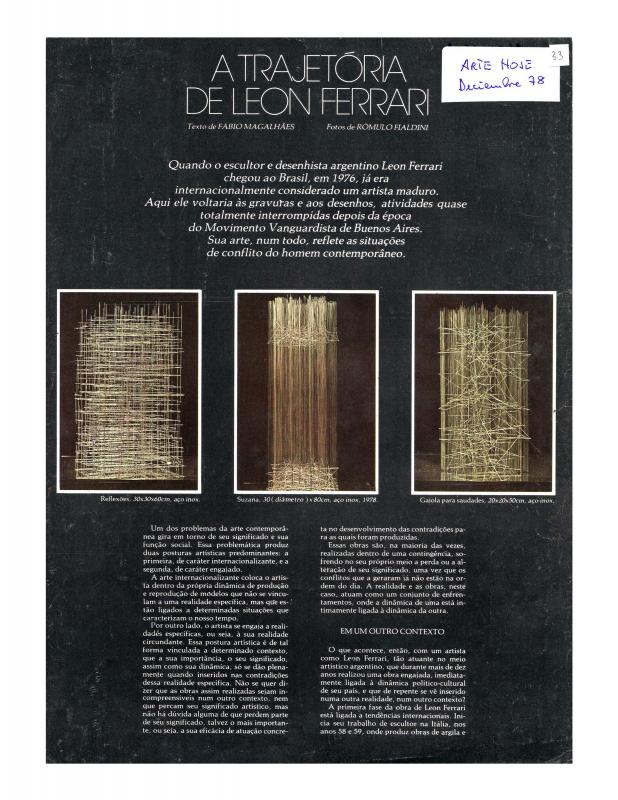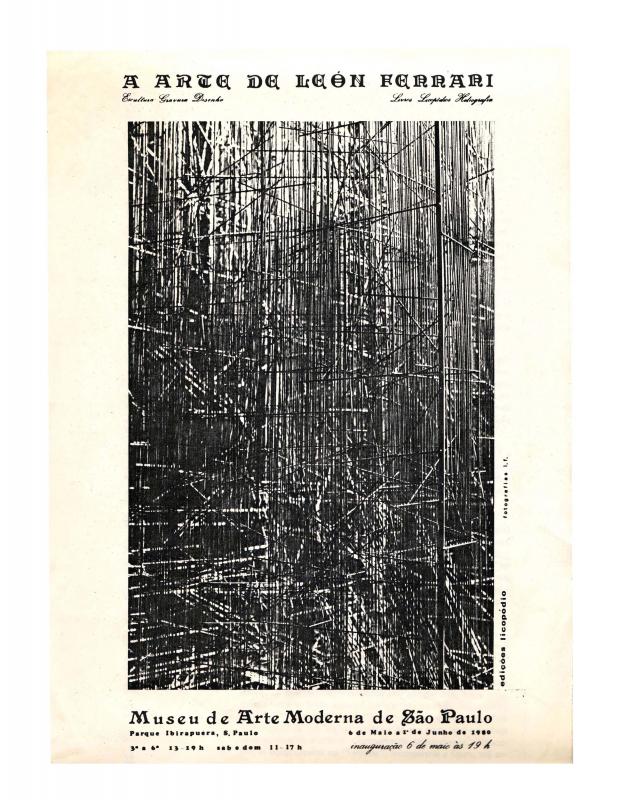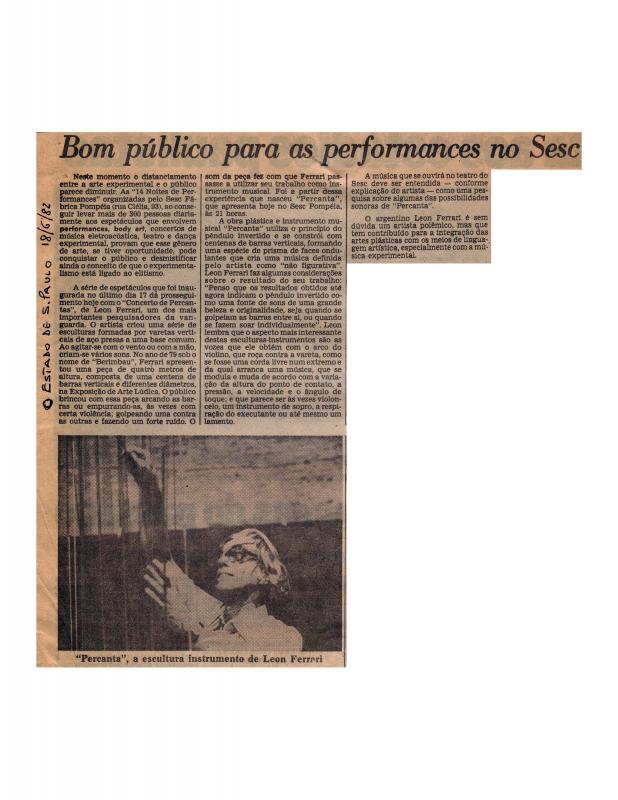León Ferrari (Buenos Aires, 1920–2013), the son of artist and architect Augusto César Ferrari, began his career in the visual arts late in life. This fact allowed him to be a nexus between the late-1950s generation of artists and the vanguard youth of the 1960s. His first works were ceramic sculptures; later, León experiments with wire structures, visual writing, and collages. What stands out in his work is both a political commitment, strongly condemning the military dictatorships, American imperialism and the ideology of the Catholic Church, and also a more formalist trait grounded in conceptual drawing and surrealist tradition. His 1965 object-montage, titled Civilización Occidental y Cristiana [Western Christian Civilization], was censured at the Centro de Artes Visuales del Instituto Torcuato Di Tella [the Torcuato Di Tella Institute’s Visual Arts Center] (see documents 743800, 744085, and 761879). In the 1970s, Ferrari was an active participant in the experiences of political conceptualism (in particular in the event Tucumán Arde[Tucumán Is Burning],1968). In response to the most recent Argentine military dictatorship’s repressive regime (1975-83), he went into exile in Brazil, where he explored a variety of ideas, such as formalism and the reproducibility of a work, as well as the spatial relationship between sculpture and music (see documents 743960, 744392, and 743870, among others). Beginning in 1984, he exhibits once again in Buenos Aires, where he settles permanently.
Correspondence maintained between the Argentinean artist León Ferrari and the Spanish writer Rafael Alberti (Cádiz, 1902–99). Alberti lived the majority of his time in exile in Buenos Aires; beginning in 1963, he finally settled in Rome. Together they published: Rafael Alberti, Escrito en el aire: 9 poemas inéditos de Rafael Alberti para 9 dibujos de León Ferrari [Written in the Air: Nine Unpublished Poems by Rafael Alberti for Nine Drawings by León Ferrari](Milano: All´insegna del pesce d’oro, 1964).
Letter written in colored ink.

